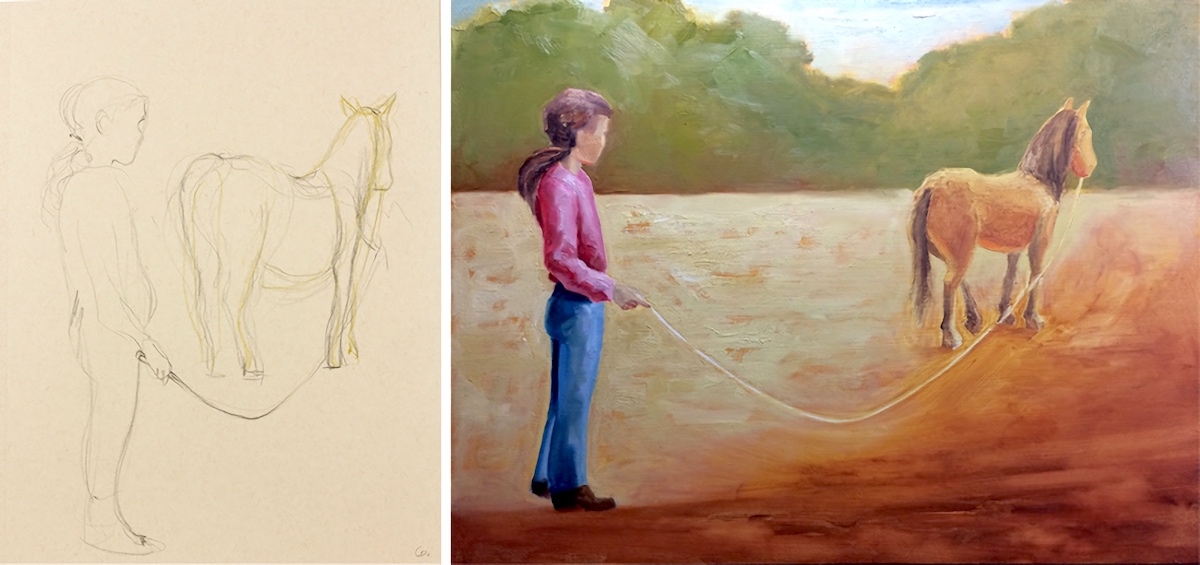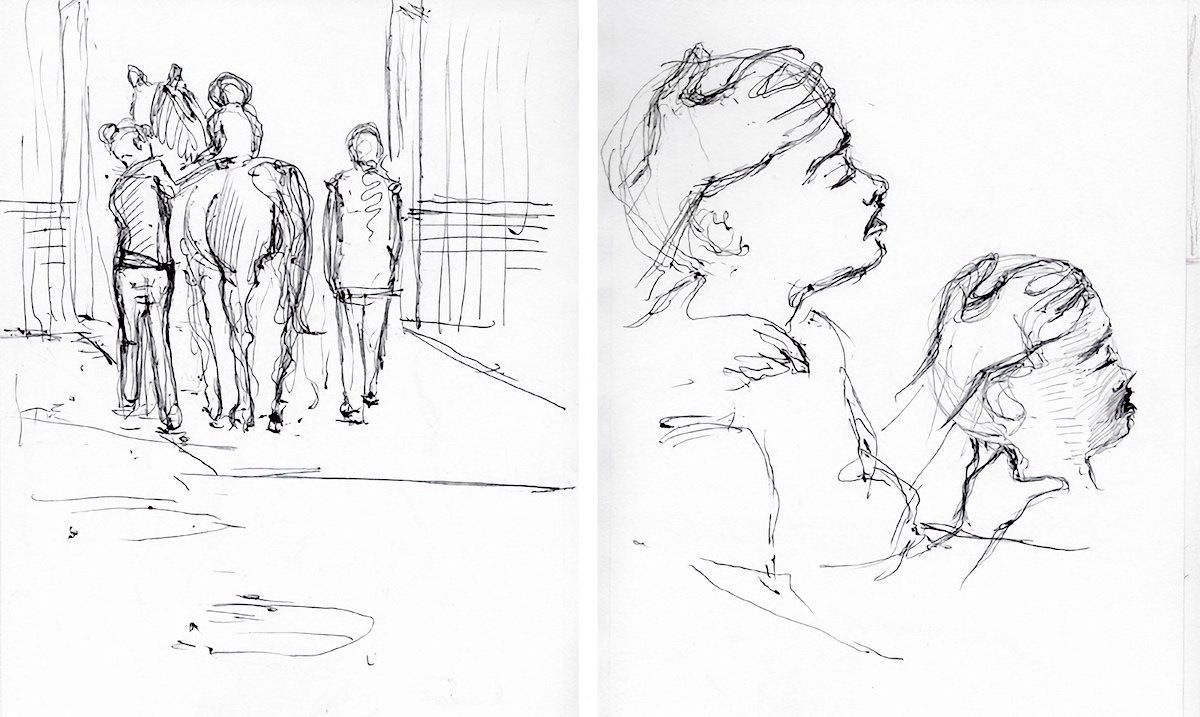Reflections From My Residency: Using the human animal bond therapeutically
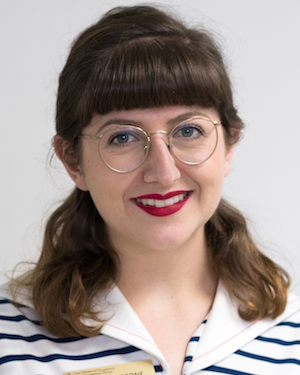
April 2, 2019
by Antonietta
As I discussed in the previous blog, humans’ perception of our emotional bond with animals started being examined and debated in the mid 1700s. But when did we start to use this bond therapeutically? The earliest report is at the York Retreat, an asylum for the mentally ill, in England 1792 where the inhabitants cared for rabbits and chickens (Netting, Wilson, & New, 1987). This therapeutic strategy took quite a bit longer to make its way to the United States, but starting in the 1940s at Pawling Air Force Convalescent Hospital, veterans were encouraged to work with farm animals as part of their recovery. By the 1970s dogs became a common tool in therapeutic settings: 48% of institutes incorporated them in some way per an American Humane Education Society report. Animals are now well-established as therapeutic partners, used by many disciplines and in variety of ways. But why? History has moved on from so many other treatments of the past. Plunge baths from the 1700s aren’t used anymore and lobotomies — which were very popular in the 1950s — are considered repugnant and deemed unethical. But animal assisted therapy has gotten stronger, more common, and better supported by research. What makes it so effective? Is it the emotional bond between human and animal?
Curious about this therapeutic bond and interested in the power of images to shed light on relationships, my father Carmine, organized a field study at The Children’s Ranch. He came every Friday afternoon for a semester to observe the sessions and sketch what he was seeing. He wanted to know if he could capture the mystery of this therapeutic bond in a visual form: painting.
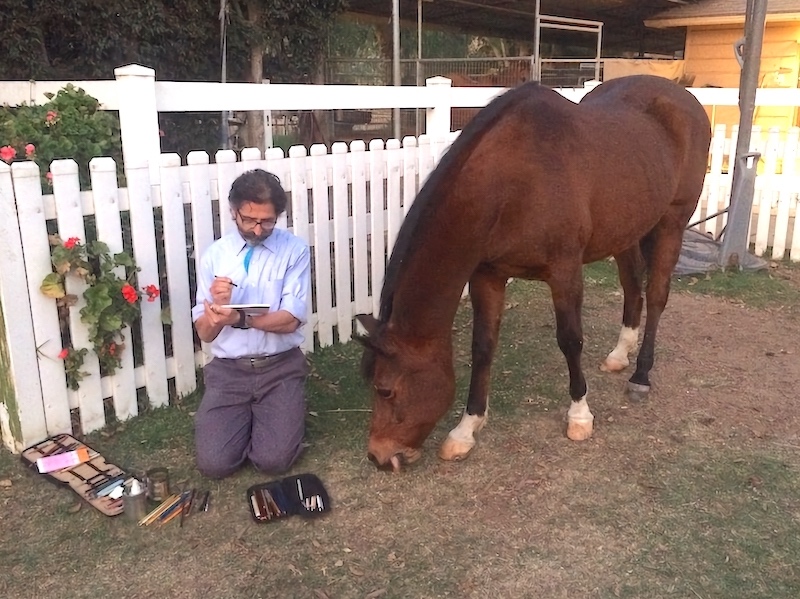
Carmine and Storm
For me as a therapist, it was an interesting experience to have this observer participating in our sessions, but I was curious what it was like for him. Since he’s my dad it was easy to get an interview!
How did you decide how much time you would spend at The Ranch?
“That decision depended on a specific rule I set for myself: my documentation would not employ any cameras; all my observations would be drawn by hand. Using a camera would have sped up the work, but it also would have had a few undesirable side effects.
- Cameras reduce the actual amount of time you need to spend on the ground and therefore can lead to a false illusion of understanding the authentic experience.
- Cameras automatically create a default composition which is hard to modify. In the process, they can eliminate key parts of an experience.
- Cameras make people pose! That was something I wanted to avoid. To see genuine moments, I needed to be integrated as part of the team so that everyone was relaxed and acting naturally.
I needed to spend time on the ground to gather visual data, build relationships slowly, accrue insight, and become a participant. It took about 4 months of consistent visits to get to that point, but I didn’t know that in advance”
What were some of the challenges you encountered?
“One challenge was developing a sketch kit that was completely mobile. Since sessions at the Ranch move around a lot, I needed to be agile and flexible. In a way, I was a member of the team and didn’t want anything to be slowing me down while we transitioned from the chicken coop to the barn. So, every piece of equipment had to be portable and always ready-to-go.
A second challenge was that children are curious, and my tools often piqued their interest. The kids wanted to play with them and once they saw some of the sketches, there was a risk they would be distracted from the work they were doing with the therapist. I had to find the line between engaging them and building our relationship, and redirecting them back to the focus of their time at the Ranch, which was the caring for the animals.
However, the fact that the kids were conscious of being drawn was significant in another way. I’m interested in how these sketches, and eventually the finished oil paintings, might serve as a mechanism for self-reflection for the children. I believe that how we picture ourselves is a big part of our identity formation. When the paintings are exhibited at my studio later this year and everyone is invited to the opening, I am curious how the children and their families will respond to visualizations of themselves participating in really unique and meaningful experiences.”
Talk about your trip to visit me at Skyline Therapy Services in Albuquerque.
“You and I had talked a lot about the differences between Animal Assisted Therapy and Hippotherapy, but it wasn’t until I got to see both that I really understood. Your work at the Ranch grows out of a relationship you foster between the children and the animals. The activities are structured around caring for the animals’ needs and understanding their well-being, as a way for the child to develop their own sense of self, autonomy, and identity as well as any other goals you are working on. From a visual point of view, that kind of relationship is subtle and elusive.
At Skyline, where Hippotherapy is the main treatment tool, it is not about the emotional bond, but the relationship between bodies. For an artist, that kind of spatial relationship is more visible and more direct; you you don’t need to visualize a mood, or a state of mind. With Hippotherapy, it much more physically evident how the therapists are helping and how the child’s body changes before and after their session.”
Now that you have finished your field work and are starting on the oil paintings, do you think you have achieved your goal of visualizing the bond?
“After I finished amassing the sketches my next big challenge was to create compositions for the paintings. These were based not just on the drawings, but also my memory and a kind of intuition that had been created by everything I had seen. The compositions were also determined by basic pictorial conventions and requirements. I know that amounts to a lot of variables. My concern as an artist is that what results might be an interesting picture, but not real documentation. I guess the critical test will be when the kids, therapists, and families see and judge for themselves.”
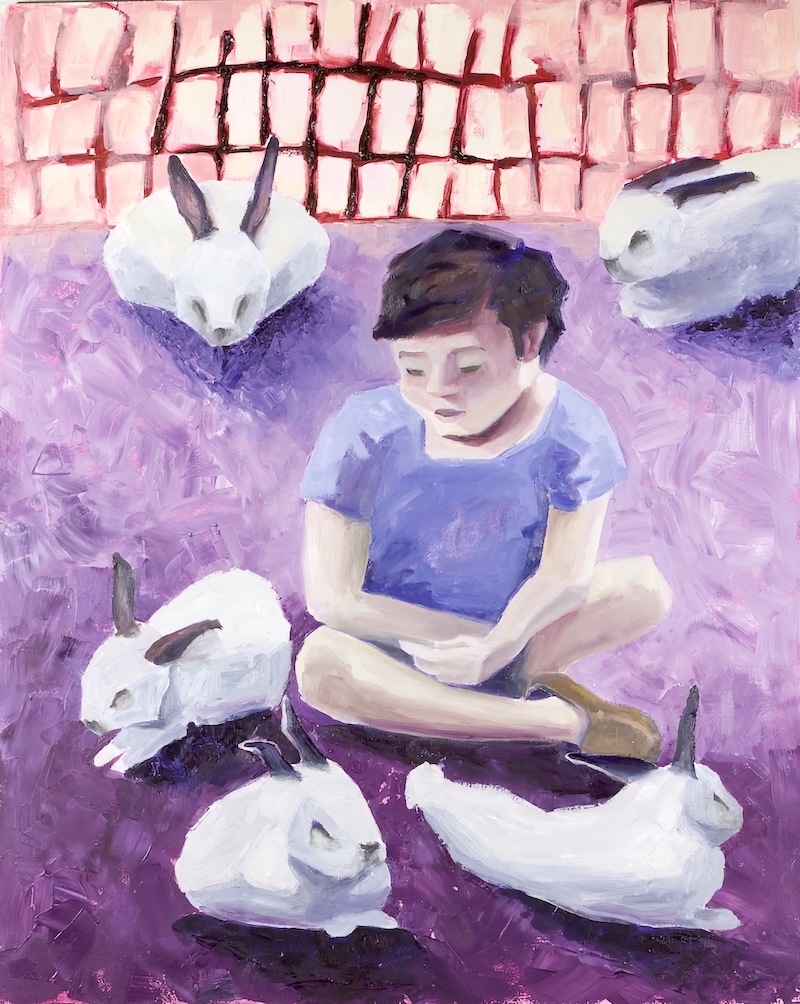
Child with rabbits
When I look at the paintings, I see what looks like my treatment sessions but also feel what it is like the be at the Ranch. It is amazing to see a visual image of that sense of calm when a child with ADHD sits quietly with the rabbits, because that is what makes them feel happy and “green.” It is incredible to see in a permanent form, the fleeting connection between a child and horse that is so strong it can get a kid out of her home despite immense rigidity. I was happy to have an extra member of our team when my dad was visiting the Ranch and I’m very excited to see what my students think of these pictures.
Netting, F. E., Wilson, C. C., & New, J. C. (1987). The human-animal bond: Implications for practice. Social Work, 32(1), 60–64. https://doi.org/10.1093/sw/32.1.60
⋯
Next by tag What are OS/OT? ⟩
⋯







